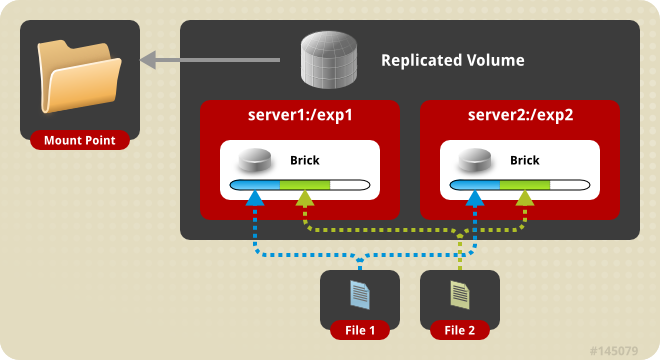In a replicated volume, data is copied across bricks on different nodes. Expanding a replicated volume requires the same number of replicas to be added. For example, if I have a volume with two replicas and I want to expand it, I require a total of four replicas.
A replicated volume can be compared to a RAID1, where data is mirrored between all available nodes. One of its shortcomings is that scalability is relatively limited. On the other hand, its main characteristic is high availability, as data is served even in the event of unexpected downtime.
With this type of volume, mechanisms to avoid split-brain situations must be implemented. A split-brain occurs when new data is written to the volume, and different sets of nodes are allowed to process writes separately. Server quorum is such a mechanism, as it allows for a tiebreaker to exist.
The following diagram shows a replicated volume:
